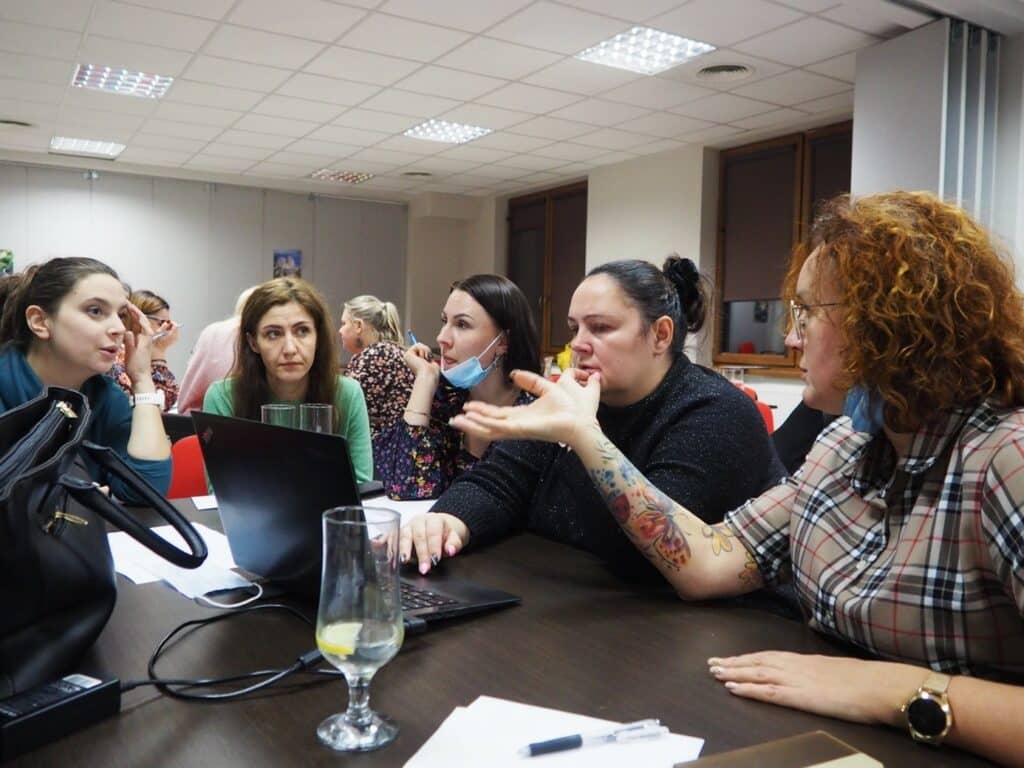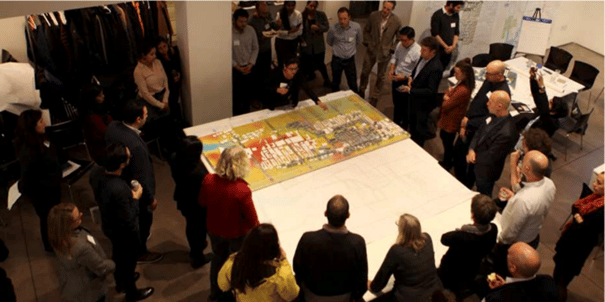Join JPI UE
Faq
FAQ
Please click here for the frequently asked questions we collected.
If you have an additional questions you are welcome to mail us at info@jpi-urbaneurope.eu

As humans, we’re more likely to be invested in an issue if it’s relevant to our lives. It’s why people losing their homes to rising sea levels are more active in climate change movements than CEOs of petroleum conglomerates. Our attitude towards the food-water-energy (FWE) nexus is no exception. As long as we have food on the shelves, water in the tap, and electricity in the plugs, what consideration do we give for the interconnectivity of the networks that provide them? But we should. So, let’s look at why you should take an interest and how to get involved – or involve others.
The FWE nexus is all-encompassing. It affects everyone. You included. That’s true whether your community benefits from a fully holistic FWE system, or if food, water, and energy are still far from integrated domains.
Because of this universal reach, it’s important to involve all facets of society in stakeholder engagement exercises. Each group offers a unique insight into the workings and failings of the nexus in its current state; a state which is likely to be in flux. Those who should be involved includes but is far from limited to:
As far as possible, all levels of stakeholder involvement – from grassroots to boardrooms – are needed to ascertain the most honest and accurate picture of the nexus in a location at any moment in time. As well as their needs and experiences, this identifies ‘power struggles’ between actors in the nexus chains: how demand for resources creates conflict.
The M-NEX team writes: “Consumers in cities are not very much aware of the complex interrelations of food, water, and energy, and therefore will not change their behaviour [sic] easily.” Nor will they, without encouragement, pressure those in charge to make changes. This allows ruling politicians, thirsty for re-election, to favour quick wins.
Stakeholders, especially in authority capacities, “typically have sector-specific goals and make decisions in silos”. This prioritises short-term aims and the supply of one resource at the expense of long-term, balanced provision of healthy food, good quality water, and clean energy.
City administrations cannot create a strategy out of thin air. Yet findings from nexus research are still not incorporated into policy. This can be attributed to a lack of engagement at an earlier stage, without which officials just don’t see the relevance.
Alfonso Medinilla from the European Centre for Development Policy Management acknowledges bottom-up participation as central to identifying problems surrounding the nexus “in which challenges are broken down, and problem-solving coalitions are created”. Importantly, it secures the involvement of “sectors and actors that are most affected by inaction”.
So, how do we get a cross-section of city society on board? Andy Wales advises we work with the psychology of consumers: rather than a channel for telling people how to do things differently, engagement is a platform for sparking enthusiasm, sharing information, and involving them in decisions. It is an important tool for changing attitudes, influencing behaviour, and thereby improving the nexus. It underpins resource efficiency. And as Steffen Lehmann notes, it informs “a clear and reliable governance structure”, and sets in motion feedback mechanisms that aid continuous development.

Any approach “must be transdisciplinary and integrated and should corroborate systemic and strategic vision”. So says Professor Alessandro Melis, co-lead of the CRUNCH project.
That’s because we need to make an impact. Even the best-laid plans for the most intricate and effective nexus network will fail if no one is invested in seeing it succeed. Communication is key. It’s about the language we use, how we relate as people, genuine action, and sustaining contact.
Flexible Friends
We must employ flexibility in the model of participation we choose.
Simply put, participatory modelling is the acquisition of experiences and knowledge of relevant individuals and groups. It paints a picture of the nexus system and forms a basis for communicating the practice, attitudes, and aspirations involved. This helps us identify what needs to change.
To be effective, modelling needs to be inclusive for a range of stakeholders. Exercises should not “impose modes of thinking not naturally employed by the stakeholders involved”. We must be ready to adapt processes and language as necessary.
Watch Your Language!
Research in the FWE field is booming. Yet to have purpose, this needs to inform and influence real-life nexus protocol. That means ‘translating’ academic findings in such a way that urban planners, designers, engineers, architects, policymakers, and industry partners can comprehend and put findings into practice.
Knowledge exchange and dissemination need a shared language common to laypeople, the political level, and businesses. If it isn’t, adapt.
Be Positive
Alessandro discovered in conversation with industry partners that the punitive ‘stick’ is not well received. Don’t tell people what they are set to lose if they don’t change; highlight the opportunity to gain. “You don’t have to say we’re doing this for the good of humanity,” business leaders told him. They already know this. Unsurprisingly, financial benefits are an effective catalyst for change.
Charrettes of (Quick) Fire
To avoid silo thinking and the need to make tricky changes later, the nexus should be viewed as a complete network from the start of the planning process. As is well established in sustainable construction, the M-NEX project used charrette workshops to accelerate a design-led approach. As a quick brainstorming exercise, this is perfect for stakeholder engagement, from engineers to administrative teams, to end-users.
Charrettes should form part of an Urban Living Lab. Effectively intensive meetings where disparate groups hash out ideas, ULLs “driven by local actors can play a key role to connect stakeholders” and “play a key role in networking actors, practicing ideas, and scaling up to the policy landscape”.
Alessandro says CRUNCH used them “to discuss or understand how we can make an impact in decision making”. Creating Interfaces hosted a series of workshops to discuss visions for the nexus and tools that could support nexus understanding and integration.
Find the Right Entry Point
Are you really bothered about the nexus? If not, you’re far from alone. It’s difficult to get people ‘on the ground’ interested. We’re put off because it’s both abstract and too complex.
Creating Interfaces overcame this dilemma by using food as a trigger, to ‘ease into’ dialogue around the spectrum of the nexus.
This was a chance discovery. They set up three Urban Living Labs, each with a different jumping-off point. Wilmington in the USA kicked off with an energy focus but, Andrea Pearce from the University of Delaware points out, soon found that “accessibility to healthy and affordable food was a bigger issue for citizens”. The focus shifted to food waste, which attracted more stakeholders – namely, the waste management services and environmental protection agency.
Adaptation is key to accessibility, interest, and retention.
Think Local
IN-SOURCE attempted to hold joint workshops for three cities but found this “to be not practicable”. The nexus looks different from place to place. Each city is a mix of unique local networks and relationships. Solutions need to fit the individual city. Relying on anyone other than local stakeholders is remiss.
This is especially important with younger generations, who are often excluded from stakeholder arenas. We must communicate on their level. Quick, interactive, fun, visual, stimulating. Alessandro suggests “any creative art, not only architecture”. Social media is obvious, but he has seen “comics, cinema, music” used to great effect.
Keep It Going
One study in southeast Asia found engagement constantly needed to be reinforced. A taskforce-maintained contact with stakeholders through letters with officials, intermittent workshops, site visits to see developments in action, capacity training, and progress reports. “Interaction and building trust with the community is of critical importance,” writes Steffen. It empowers stakeholders with a sense of ownership. Continued engagement allows them to understand the benefits of innovative and resilient nexus solutions. Not only do they get to voice their perspectives “in meaningful discussions to assist in making more informed and integrated decisions and management procedures” but also reflect on how their input affects change.
The food-water-energy nexus matters. Its fingers reach into every cranny of our lives. Whether citizen or professional, decision-maker or consumer, every one of us has a responsibility – or at least the opportunity – to inform a more succinct FWE ecosystem. Involving diverse stakeholders allows us to plan for everyone’s needs and come up with a policy that creates robust cities. To do so requires flexibility and a sense of ownership. In turn, this hinges on accessible dialogue, interactive exercises that allow us to visualise the nexus, and a chance to reflect on developments. And most importantly of all, when we’ve begun this good practice, we need to keep it up.
This article is part of a pilot effort between CityChangers and JPI Urban Europe to highlight the complex interrelations of urban food-, water- and energy systems to a non-academic audience. The articles are based on interviews with researchers from five of the 15 projects funded in the SUGI FWE Nexus, reports produced in the SUGI FWE Nexus initiative as well as public statistics and reports. The conclusions and recommendations derive from the authors conclusions. Read more articles and access research results from all SUGI FWE Nexus projects at the Urban Europe website.